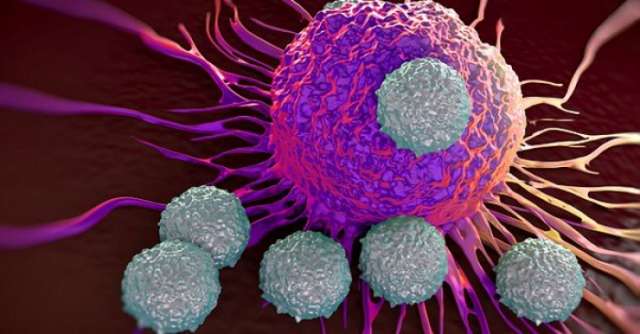The researchers discovered that when fat was transferred from an animal that had been exposed to a particular bacteria to one that had not, the unexposed animal was able to fight off infection as well as the one that had already encountered the bacteria.
Their findings suggest that fat transplants could someday be used to help fight off diseases that might otherwise be fatal.
As much as we fight fat, it is essential not only to our energy stores, but to the maintenance of body temperature and systems.
However, as the NIH researchers point out in their study, published in Immunity, fat's role in the immune system has not been well understood.
The relationship between the metabolic system that helps us convert fat into energy and our immune system is a complex one that scientists have begun taking a closer look at in recent years.
While too much fat can throw that relationship out of balance and weaken the immune system, the new NIH findings suggest that fat may be getting a worse rap than it deserves, as it fights infections.
T-cells are a kind of white blood cell produced in bone marrow, and distributed through the body's lymphatic system.
The two types of T-cells - known as helper cells and killer cells - work together to fight off infection with something foreign, like a bacteria, enters the body.
Low levels of T-cells can be fatal.
The HIV virus, for example, kills T-cells. HIV and AIDS are deadly because they weaken the immune system so badly that an infected person cannot fight other illnesses.
Once normal T-cells meet a particular pathogen, they become memory T-cells, so-called because they have learned how best to fight that particular intruder and can recall that process to combat infection even more effectively the next time around.
The NIH researchers found that fat tissue in mice and rats have 'abundant' resources of a special kind of these T-cells.
After finding that the high concentration of memory T-cells in fat, the study authors took their experiment a step further to see if those cells in fat could be used in another animal to fight the same infection.
They exposed the first round of mice to a pathogen. The T-cells fought off the infection the first time, and did so even more effectively when they were infected again.
Then, they transplanted fat from those mice to a new batch that had never been infected.
When they exposed that second batch of mice to the pathogen, their metabolisms switched into a different gear, making the memory T-cells work even more aggressively.
The fat from the previously infected mice remembered the infection it had encountered in the first set of mice and 'was sufficient to protect uninfected mice from lethal pathogen challenge,' the study authors wrote.
More about: #science
















































